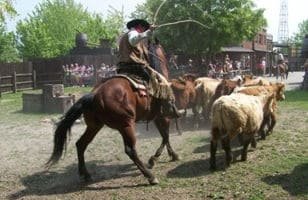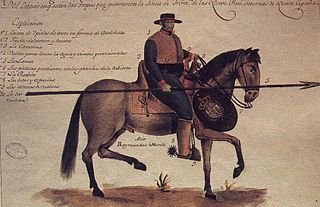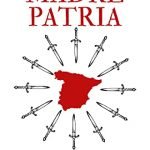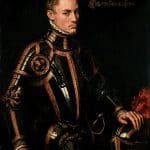
Contents
Cowboys: Where did they come from? Why in Texas?

+ Hispanic Roots
Cowboys are considered to be very American. However, the Cowboys have always existed and their origin is different.
The Cowboys are not originally from the U.S. The custom, his clothes and even his equipment, were from Mexico and before they came from Spain. As well as the transfers of cattle.
Hispanic was the American cowboy
The custom of moving herds of cattle great distances, although considered from the United States, had its origin in Hispanic Texas.
Although it is surprising to us because of the ignorance of the history of the United States, the origin is totally Hispanic. Both the American cowboy and the transfer of herds of cattle. Spain to feed the numerous Spanish troops that helped in the War of Independence to the 13 colonies, started it. Led by Spanish troops and ranchers from Texas, more than 10,000 cattle were moved.
Cowboys come from Spain, and they went to Mexico
Spain spread the horse culture throughout America. But cowboys (cowboys) or the movement of cattle in great herds of cattle are mistakenly considered Anglo-American.
Spanish Mesteños Horses
In Spain there was a whole tradition of horse dressage. In a gentle way he was being educated until he was tamed. There was normally a culture of good relationship with the horse. When they arrived in America, due to the circumstances, they were not always careful and they pulled on the spur to make him obey.
Initially, large and strong warhorses were brought with the conquerors. The enormous difficulties of the crossings and the difficult adaptation to the new lands, produced many deaths. Horses began to be brought from the marshes of the Guadalquivir, in Andalusia (southern Spain), which were harder and more resistant. The same was done with the cows, the breed that grazed by the river. The hardest and most antlers were chosen, since they were also going to be Mesteñas, because they grew up alone in the prairies. Their horns, longer than usual, would help them defend themselves against wild predators from America.
Over time the horses began to breed alone in the meadows and were called mesteños (Unbroken Horse). The Anglo-Americans called them Mustangs.
Video: Hispanic Cowboys
It explains the arrival in America of the horse and its culture.
The wide-brimmed hats, the saddles, spurs and the customs of the Guadalquivir marshes
The Hispanic Council informs us of the Hispanic Roots of the U.S.A. doing a great job of disseminating Hispanic History and Culture.
Video: Promised Land
Types of Hispanic cowboys according to territories
Texan Cowboys, the most famous
Spanish cowboys were the first to herd cattle from Texas, when it belonged to New Spain.
The Mexican ranches were spreading as the territories of Texas were colonized. They were soon a great source of wealth. The cattle lived great times in the open air, and were generally prepared to face wild animals with their long horns.
And soon the figure and work of the Mexican cowboy, in charge of taking care of him, was revalued. Cattle became valuable animals that were worth protecting from other animals, disease, and thieves.
Mexican cowboys, the first

A current custom, which, due to propaganda, we consider as something typical of the U.S. In reality, it existed years before the birth as a country of the United States of America. It was inherited from Hispanic Texas. The Cowboys are the former Mexican cowboys who guarded the great ranches of New Spain, especially Northern Mexico.

The Unknown Spanish Roots of North America: From Cowboys to Cowboys to take care of the herds of cattle, popularized by American cinema as a characteristic of the country.
Herds of cattle, Texas to Louisiana
The first transport of cattle in herds was carried out by Spanish troops and ranchers from Texas. Following ancient customs of Mexico that were applied in Texas.
Something that seems so typical North American is a custom inherited from New Spain.
The New Spain Cowboys made the first transfers, which would later be popularized as a North American feature.
Californian cowboys and bears
Not as well known as the Mexican cowboys, the Californians were also famous. In California, these cowboys reached a high level, improved and mastered the techniques and skills that allowed them to control cattle and even bears. They were considered one of the best.
Florida cowboys (clakers)
In the Florida peninsula, there were also ranches, with their own characteristics. Over time the cowboys were called clakers. They are an English version of Hispanic cowboys. They appear in 1763 when England controlled Florida for 20 years. By taking over the territories and cattle of the Hispanic ranches, the “cowhunter” or “cracker cowboy” appear to control the cattle. This would continue when the territories were incorporated into the U.S
Hawaii Cowboys (Paniolos)
During a time in the Island of Hawaii, a taboo was dictated, by which cattle could not be killed. This achieved its objective and the herds grew rapidly and in large numbers. The King of the Kamehameha Islands I, asked Mexico to send him a group of Cowboys, Californians, Mexicans, etc. (expert workers from Hispanic Haciendas) who laid the foundations for cattle exploitation. They were all considered of Spanish descent. Given how difficult it is to pronounce for a Hawaiian, something like Paniolo remains. And the name for the cowboy is still maintained.
So do not be surprised if you see cowboys in Hawaii, with their hats and boots, they are Paniolos, the culture of the Spanish horse.
LLaneros (Venezuela, Colombia)
The culture of the horse spread throughout America, and each place gave rise to its own styles. The llaneros were the cowboys of Colombia and Venezuela.
Gauchos in Argentina
In the vast expanses of land in Argentina, cowboys on horseback were also needed. In the Pampas, it was called Gauchos, with its own characteristics, of miscegenation and camaraderie, without distinctions between indigenous cowboys or not. Their work and sharing long hours of work united them, living far from the towns.
Hispanic Ranches and Rodeos
Large ranches were developed in the Texas territories, and the first rodeos were made
The ranches were created following Hispanic customs, adapted to America. Hernán Cortés was already accompanied by a man from Salamanca who would introduce extensive livestock farming in Mexico, such as in the Haciendas and in the Dehesas de Salamanca in Spain. Soon more Charros cowboys from Salamanca arrived, knowledgeable about working with cattle.
In imitation of the Ranchos and Rodeos of Northern Mexico, a multitude of ranches were created in Texas. They followed the same customs and began to carry out Rodeos for the entertainment of the cowboy population, isolated by their work in distant lands, for seasons.
Because of Spain’s support for North American Independence, a legal exception was made and large quantities of cattle were allowed to be moved to Louisiana.
+ Hispanic Rodeo in the ranches
They help in the War of the 13 colonies against the English
Very harsh laws prevented doing so under pain of death
Spanish laws were very strict on this. It was not allowed to move cattle raised in one area to another, under pain of death.
There were large numbers of cattle on Texas ranches. The Governor of Louisiana, Bernardo de Gálvez, knew him well, since he had been stationed by the army in these territories to face the Apaches.
Some belonged to private ranchers, but others to the network of Franciscan missions that extended throughout the territory controlled by Spain, and one of them was Texas.
Bernardo de Gálvez feeds his army
He started the custom out of the need to feed the Spanish troops
Although it has been ignored by North American Anglo-Saxon historians, the role of Spain was fundamental in the Victory and Independence of the 13 colonies.
Spain participated in the war seizing all the English bases on the coasts of the Gulf of Mexico, Alabama, Florida and came to occupy the Bahamas islands.
For this she sent more than 10,000 soldiers that had to be fed. For this she requested permission and organized the first transfer of cattle.
+ Spain decisive in the victory of U.S
Gálvez and the 10,000 Texas cattle
Transfer from Texas to New Orleans
Gálvez was very aware that his soldiers had to be fed very well. These were mostly Mexican, Texan, Californian, Cuban, Spanish, French, etc.
And he knew where the best food was. During his first assignment in New Spain, he had been doing control work and pacifying the Apaches. At this time he was familiar with the huge ranches of Texas, and he was impressed to see thousands of head of cattle grazing freely. Upon approval of a special permit, he was allowed to move cattle to Louisiana.
In charge of protecting him, the guards of the border were chosen, the respected soldiers on horseback, called Dragons or Soldiers of Cuera.
Thanks to Gálvez’s initiative, the cattle were sent, guided by cowboys and escorted by Spanish soldiers from the forts (Presidios)
At the request of Bernardo de Gálvez, then Governor of Louisiana, herds of cattle of thousands of heads are sent from Texas. These cattle were provided by the missions and private ranchers.
Run by Texas Ranchers
Escorted by the Spanish Leather Dragons
They supplied troops from several presidios (forts) and arrive in New Orleans, after making the first crossing through North American lands.
This was the first and great movement of a large herd of beef cattle, all over Texas to Louisiana.
During the years 1779 to the year 1781, almost 10,000 head of cattle were moved
Soldiers of Cuera, the efficient people of the border

The Cuera Dragons or soldiers on horseback were the vigilantes of the border of New Spain. There was a network of forts guarded by these soldiers. It was an essential condition to have been born in the territory, to be accustomed and adapted to it. Therefore, a large number of them were mestizo. It was no wonder they used all kinds of weapons, including bows and arrows.
The dress was that of the typical Spanish gentleman. Cordovan hat, saddle, saddle bag, boots, spurs, stirrup, protective gaiters (above the pants), and the typical Leather Cuirass, as it is made of 7 layers of leather. He defended him from the arrows of the natives.
His weapons, musket, two pistols, spear or pike, broad sword, bow and arrows sometimes, shield type shield, made of buffalo skin, It can be said that he was the first ancestor of the cowboy or cowboy in US territories, for his work of vigilance.
+ Cuera dragons, the watchers
Columbus and cows to the New World
From the Canary Islands (La Gomera)
Already on his second trip, Columbus decided to take cattle to America. To make the adaptation easier, he took the cattle from the island of La Gomera in the Canary Islands, since it has a climate more similar to the island of Hispaniola in the Caribbean.
Bison Catch, a Failure
The Spanish tried to tame them
The Spanish were impressed by the bison and captured some of them, although it was difficult for them to lose some horses.
They tried to tame them but saw after several attempts that it was not possible. They assumed failure, and the attempt ended.
The same had happened to the indigenous people of North America. His surprise was to see that the Spanish had domesticated the horses, something incredible for them, because of their bad experience with the bison.
Cattle adapted to the climate and animals
Later it would be considered almost an autochthonous species (longhorn race)
The cattle that best adapted to the harsh conditions of the climate and the Texan terrain came from the lands of the South of Spain, specifically from Andalusia and Extremadura.
Animals that being in the field for a long time could be attacked by wild animals. This species, better equipped with long horns, was better able to defend itself from the wild animals of the area, snakes, coyotes, etc. From her and her crossing with other cows brought by the Spanish 300 years before, she evolved to become the typical Texas cattle.
They were cattle characterized by long horns as a result of natural selection, since they spent long periods alone in the field and had to defend themselves.


